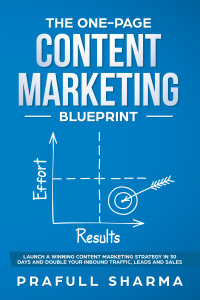Can Colors Help You Improve Sales On Your Site?
85% of shoppers say that their purchasing decisions are very much affected by the color of a product.
Colors can change moods and trigger certain emotions. This means that a site’s design elements, including color choices, can elicit specific reactions from your visitors and ultimately, increase conversions.
If all this seems a little too good to be true, after all, how can something as innocuous as color affect your bottom line, take note:
- Colors have been said to raise brand recognition by 80%
- Readership can go up by as much as 40%
- Comprehension from users can reach 73%
All things considered, it certainly wouldn’t hurt to understand how different colors can affect a business and improve how your audience perceives them to command attention and engage them. Start by reviewing this brief guide—
1. Red
Historically, red is a color strongly associated with victory and winning. But it’s also a color tied to emotions like urgency and power. This means that red, while eye catching and attention grabbing, shouldn’t be used frivolously.
Thoughtfully used, however, red can do a lot for your ecommerce site. While you definitely have to avoid using a full red background for landing pages, critical elements on your site that you want to highlight would benefit from this hue. For instance, to trigger action, using red for your “buy now” button helps capture audience attention and communicates urgency. Red is also effective for pushing impulse and last minute purchases.
2. Blue
Blue is a more subtle hue typically associated with emotions like tranquility, stability and calm. Given this, you might have noticed how blue is popular among banks and other financial institutions. This is because the color helps them communicate their trustworthiness and security.
In terms of sales, the color blue affects sales a little less directly than colors like red. But it does help pacify possible anxiety that your users could have when making purchases on your site. Adding varying shades of blue to your checkout page could certainly help communicate the fact that you are a trustworthy website worthy of receiving their bank and contact details.
3. Green
The most obvious association one could make with the color green is to nature. Anything natural, environmental, and organic. That said, while a brand isn’t necessarily environmentally related, it’s usual for them to choose green if they want to attract that same audience.
But studies also note that green, more than any other color, helps people be more creative and is a visual representation of a “go” signal. Because of that, it makes it a great option for call-to-action backgrounds which highlight options for users.
4. Purple
Purple is most closely associated with royalty. But it also ties into values like power and wealth. Purple combines the urgency of red and the stability of blue, but implies spirituality as well.
Statistically, women count purple as one of their top three preferred colors and ranks as one of the least preferred for men. So, in terms of practical usage, if you have a site or a product where your primary target audience are women, then it’s a great color to use.
5. Black
It’s rare for websites to use black on their website, but when used sparingly, it can communicate luxury and reach out to niche audiences, specifically male users.
It’s a color that’s typically used by a lot of high-end brands to communicate sophistication and elegance. So while it doesn’t do much by way of conversions, it helps convey a sense of elegant minimalism that creates a distinct and memorable impression from users.
6. Orange
As far as bold colors go, orange is equally eye catching as red, but doesn’t imply urgency with the same insistence as red.
You might have noticed that orange is a popular choice among ecommerce sites that feature stark minimalist backgrounds and want to offer an eye-catching but unobtrusive way to bring attention to their CTA buttons. Orange is also a color that audiences generally feel a positive association with, and it tops both men and women’s preferred colors lists.
Depending on what you want to elicit from your audience, colors can certainly help you achieve that. Choose your hues thoughtfully and with care. Make sure it’s aligned with your brand identity. Don’t just choose blue for your site because you want to create trust, when it has nothing to do with your brand personality.
How color will impact your site is still dependent on how well you execute it. So as always, our advice is to test it to determine what works best for your site, sign up buttons or CTAs and to get to know your users.
As always, if you have any questions, feel free to leave a message in the comment section below.
And if you need help converting traffic into actual conversions, give us a call today.
Share This Story
2 Comments
Leave A Comment
Get the latest growth ideas, strategies, and best practices delivered to your inbox.
Quick read that helps 7000+ subscribers.










[…] could also unearth data from your audience specific to the UX design. For example, since colors can help improve conversions, you could find out which colors most of your users respond […]
[…] your email for a free trial, then it’s probably because these products and services offered a compelling call-to-action […]